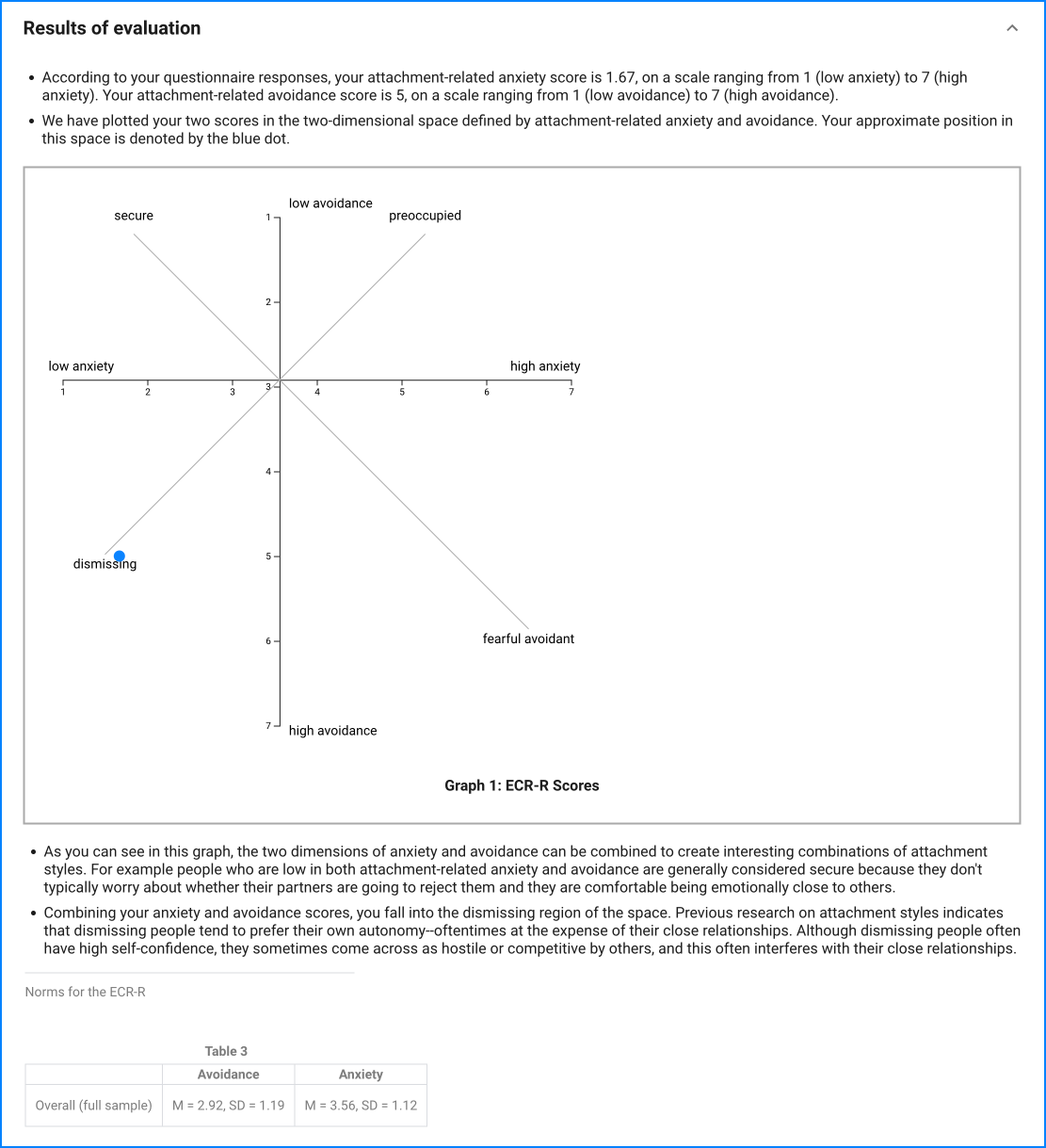The first 18 items listed below comprise the attachment-related anxiety scale. Items 19 – 36 comprise the attachment-related avoidance scale. In real research, the order in which these items are presented should be randomized. Each item is rated on a 7-point scale where 1 = strongly disagree and 7 = strongly agree. To obtain a score for attachment-related anxiety, please average a person’s responses to items 1 – 18. However, because items 9 and 11 are “reverse keyed” (i.e., high numbers represent low anxiety rather than high anxiety), you’ll need to reverse the answers to those questions before averaging the responses. (If someone answers with a “6” to item 9, you’ll need to re-key it as a 2 before averaging.) To obtain a score for attachment-related avoidance, please average a person’s responses to items 19 – 36. Items 20, 22, 26, 27, 28, 29, 30, 31, 33, 34, 35, and 36 will need to be reverse keyed before you compute this average.
The Experiences in Close Relationships-Revised (ECR-R) questionnaire is designed to assess individual differences with respect to attachment-related anxiety (i.e., the extent to which people are insecure vs. secure about the availability and responsiveness of romantic partners) and attachment-related avoidance (i.e., the extent to which people are uncomfortable being close to others vs. secure depending on others). The ECR-R questionnaire is a revised version of Brennan, Clark, and Shaver's (1998) Experiences in Close Relationships (ECR) questionnaire.




